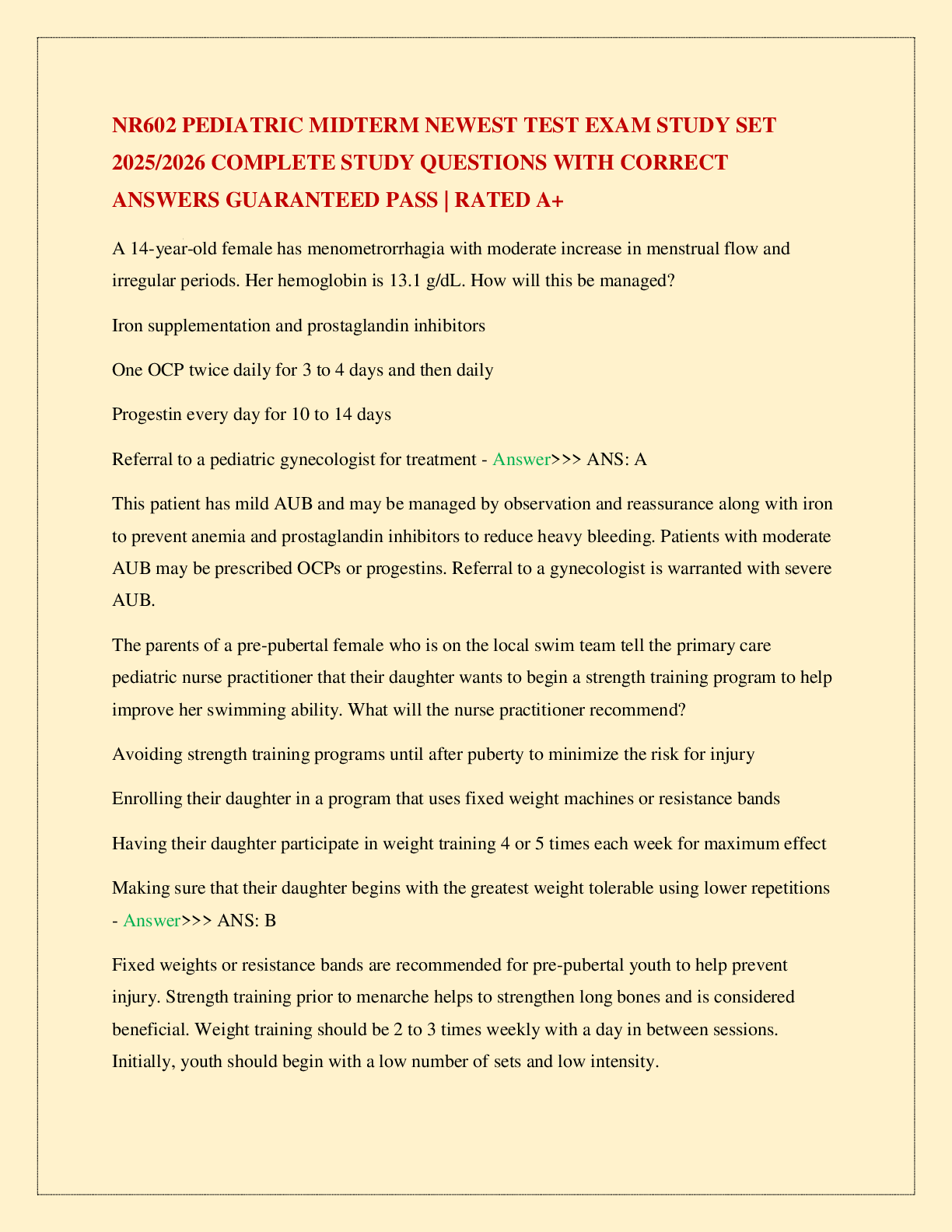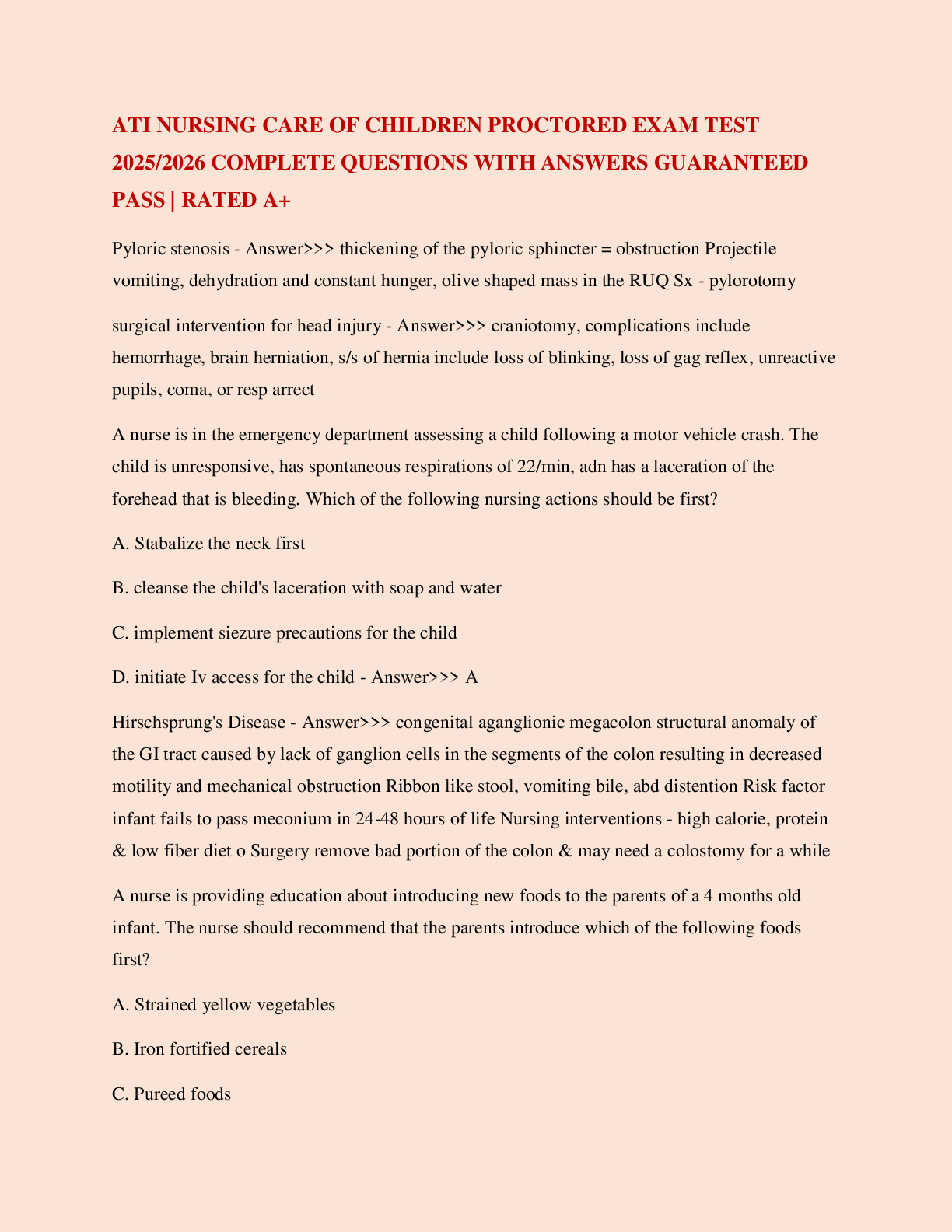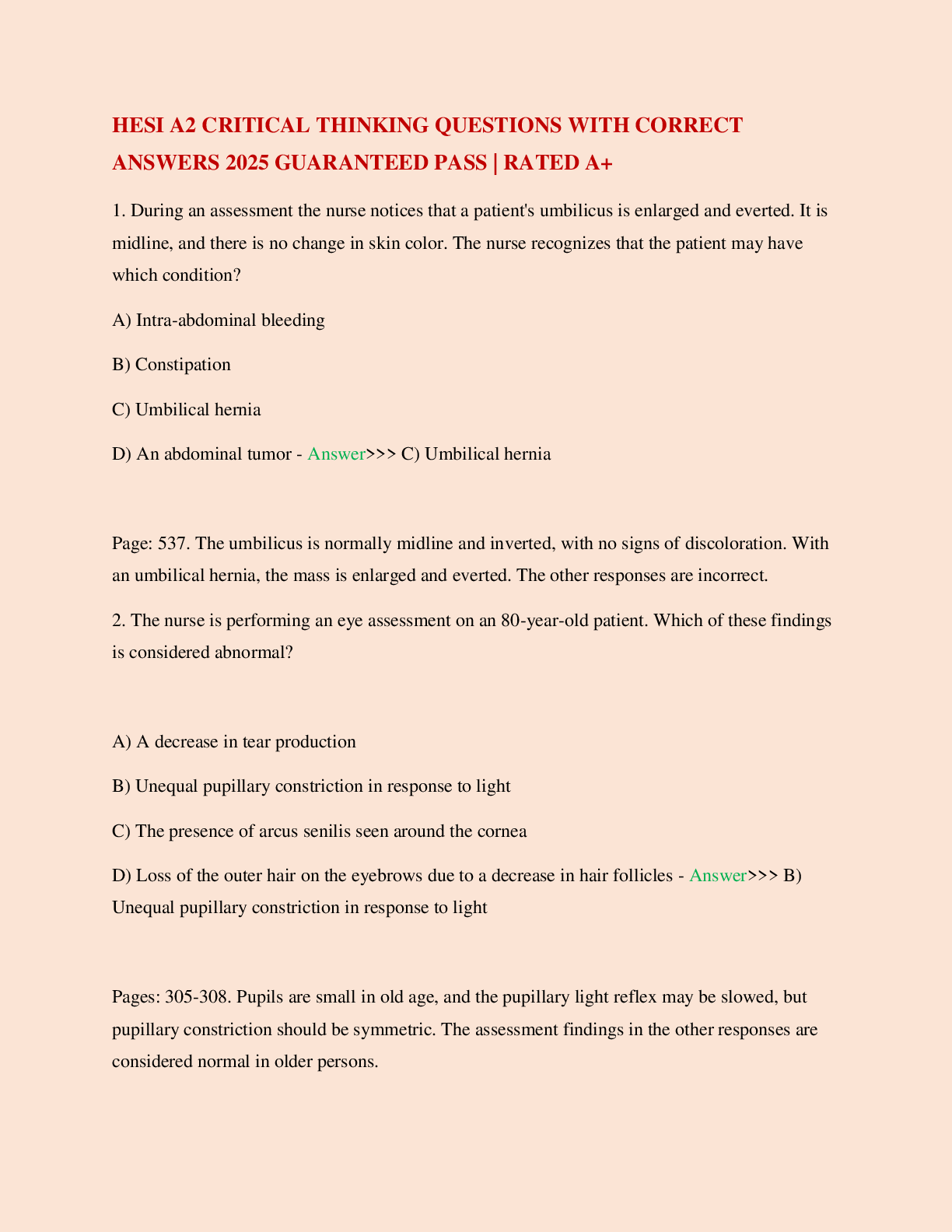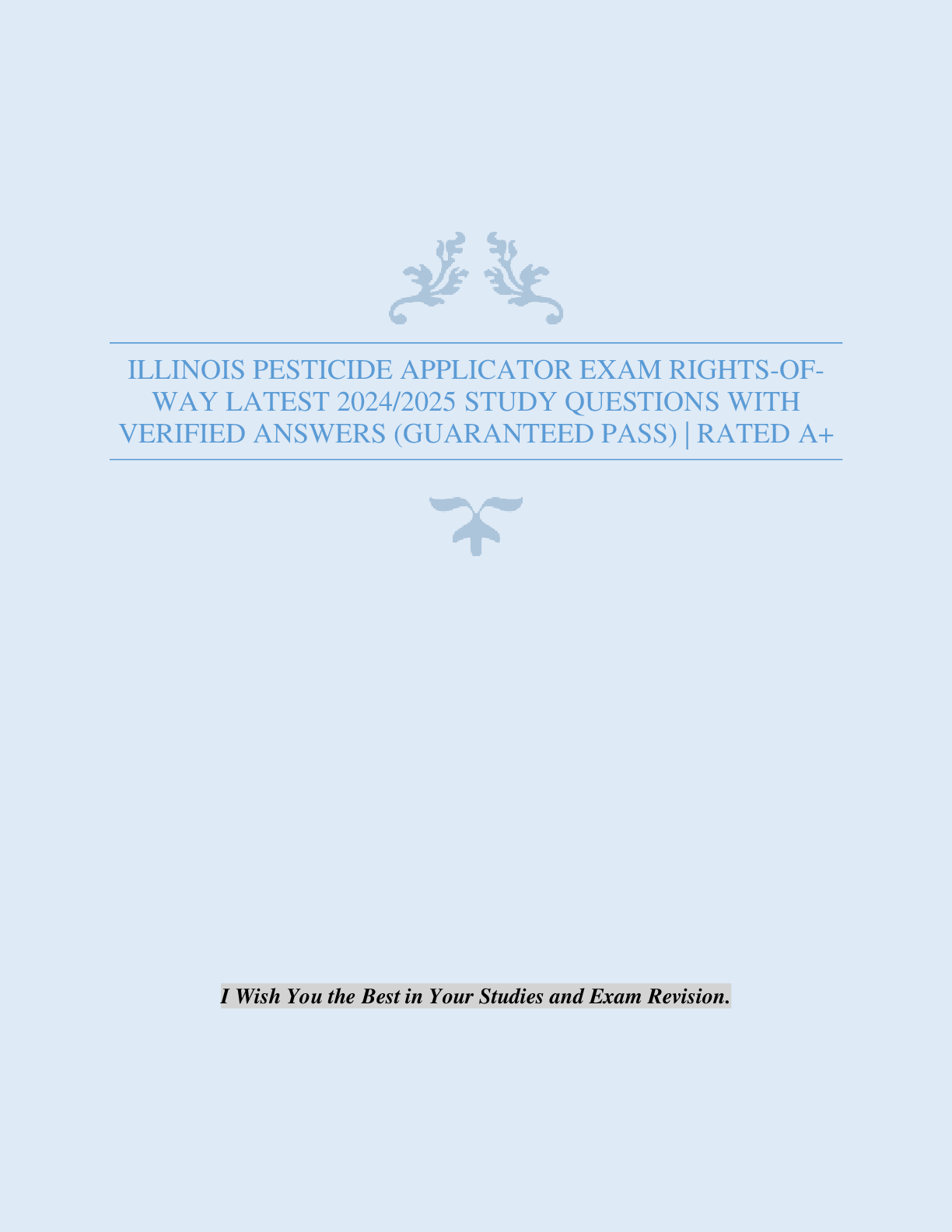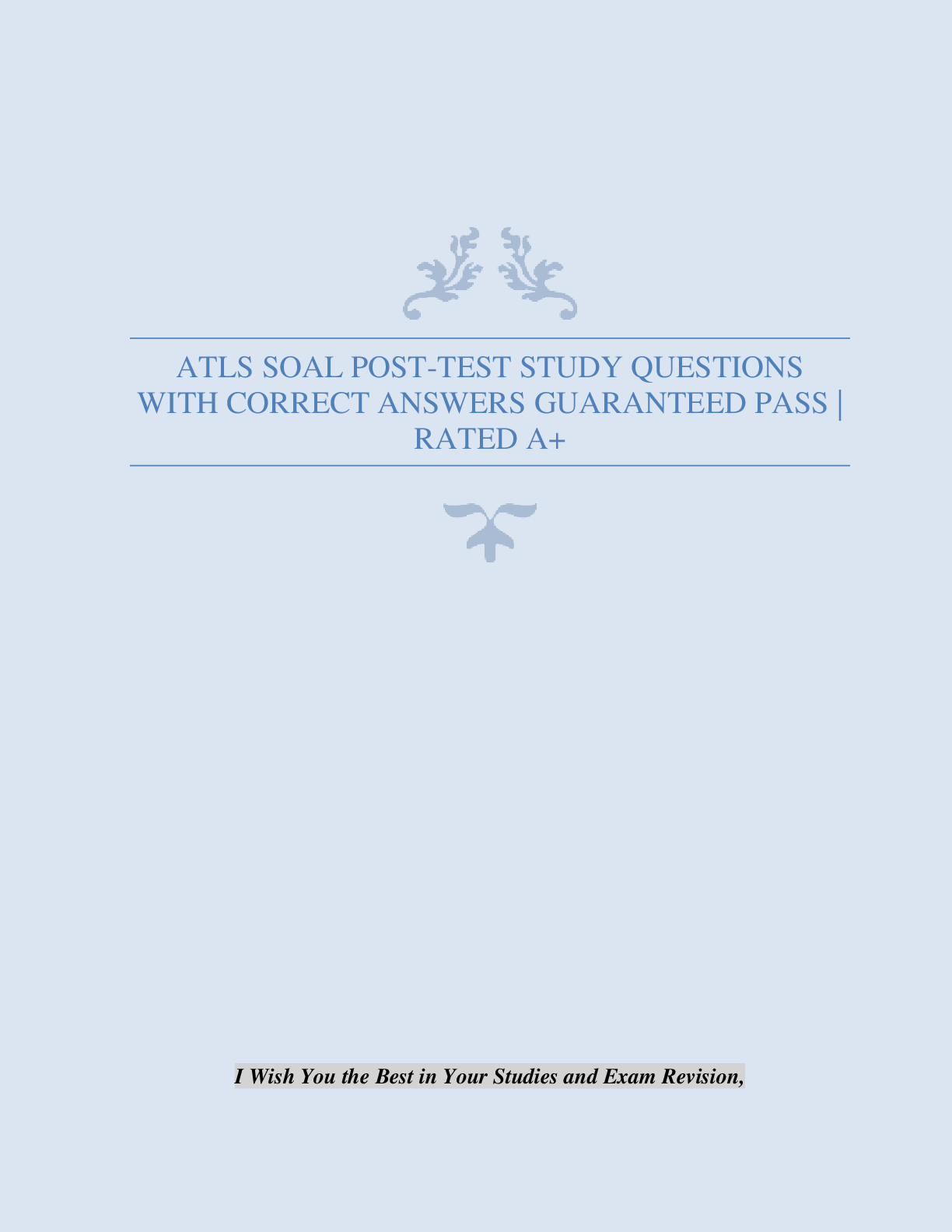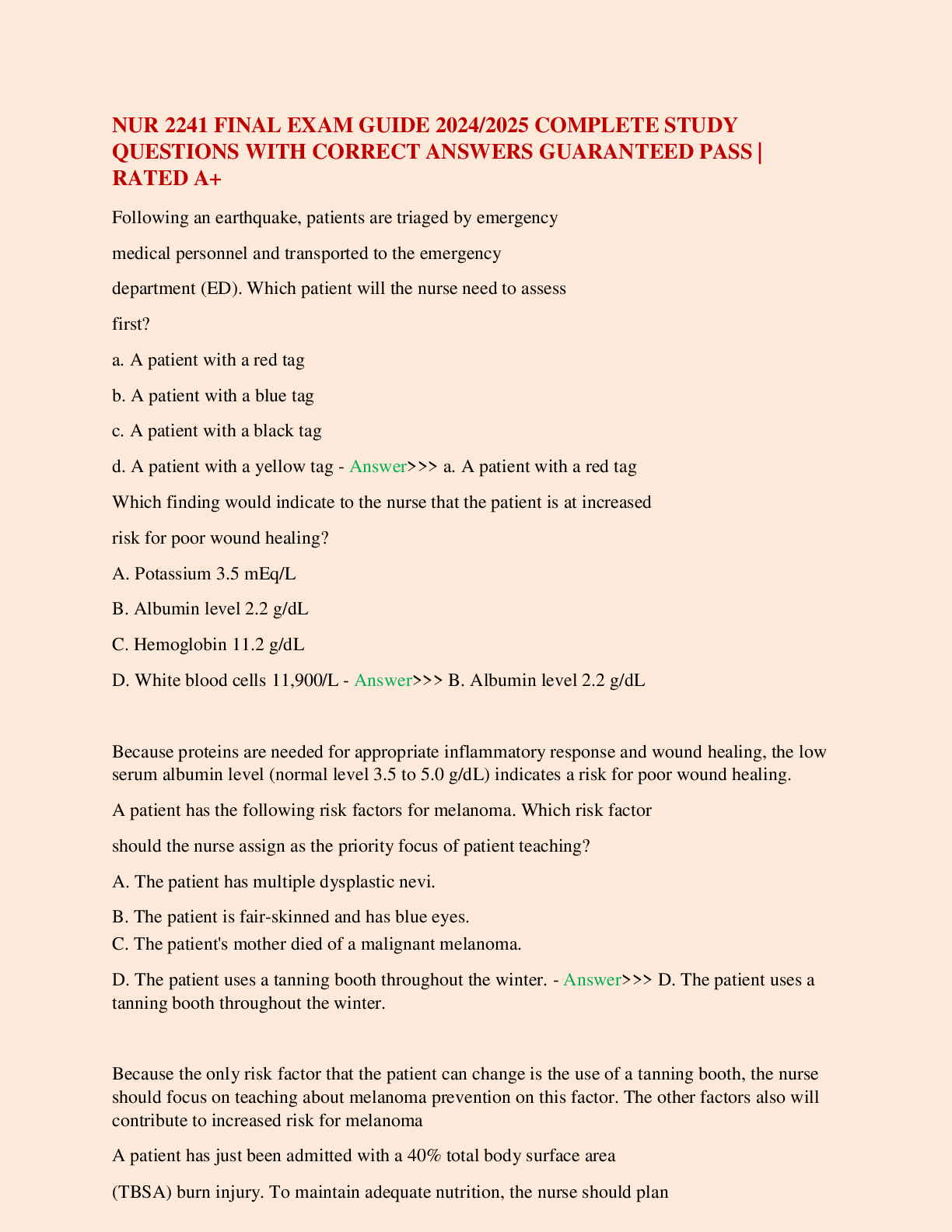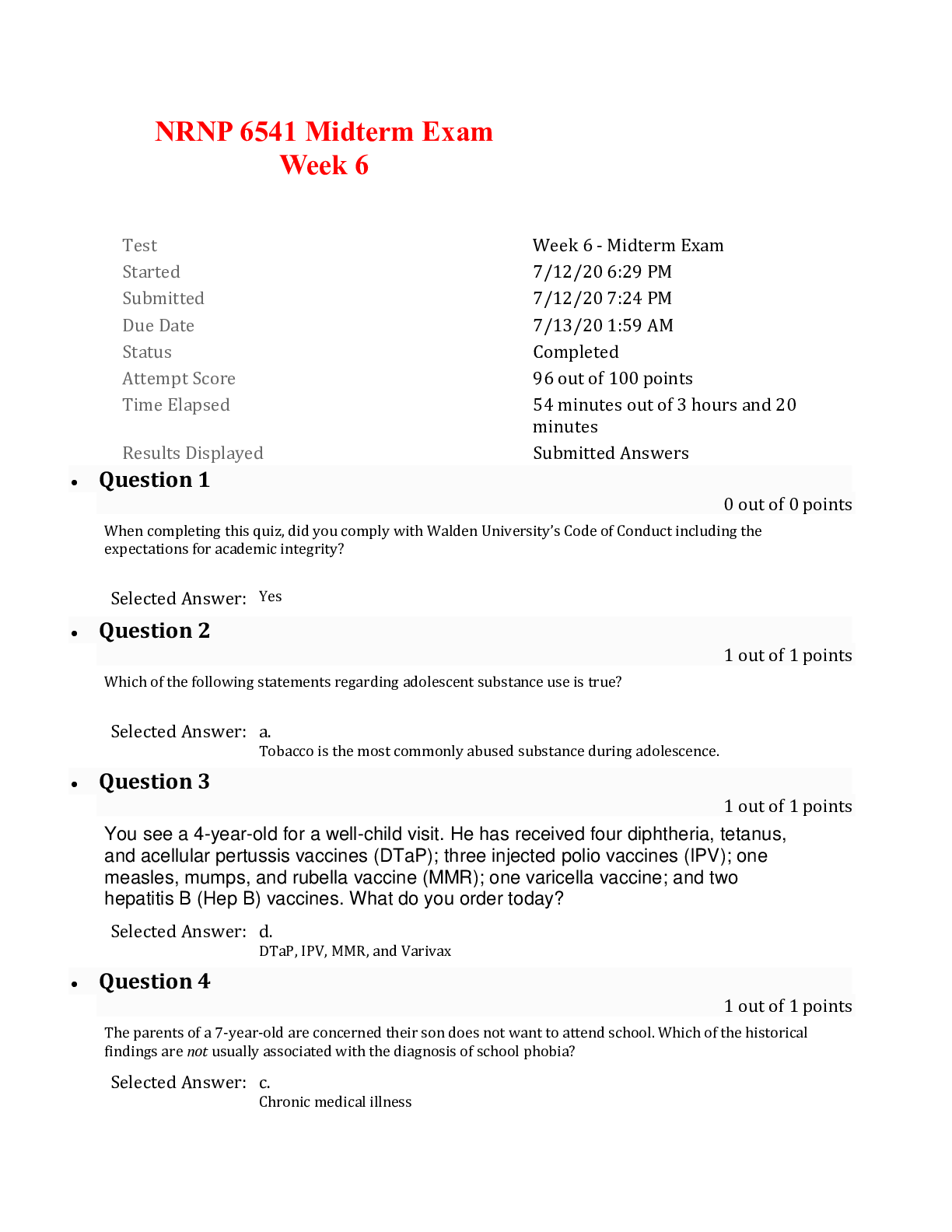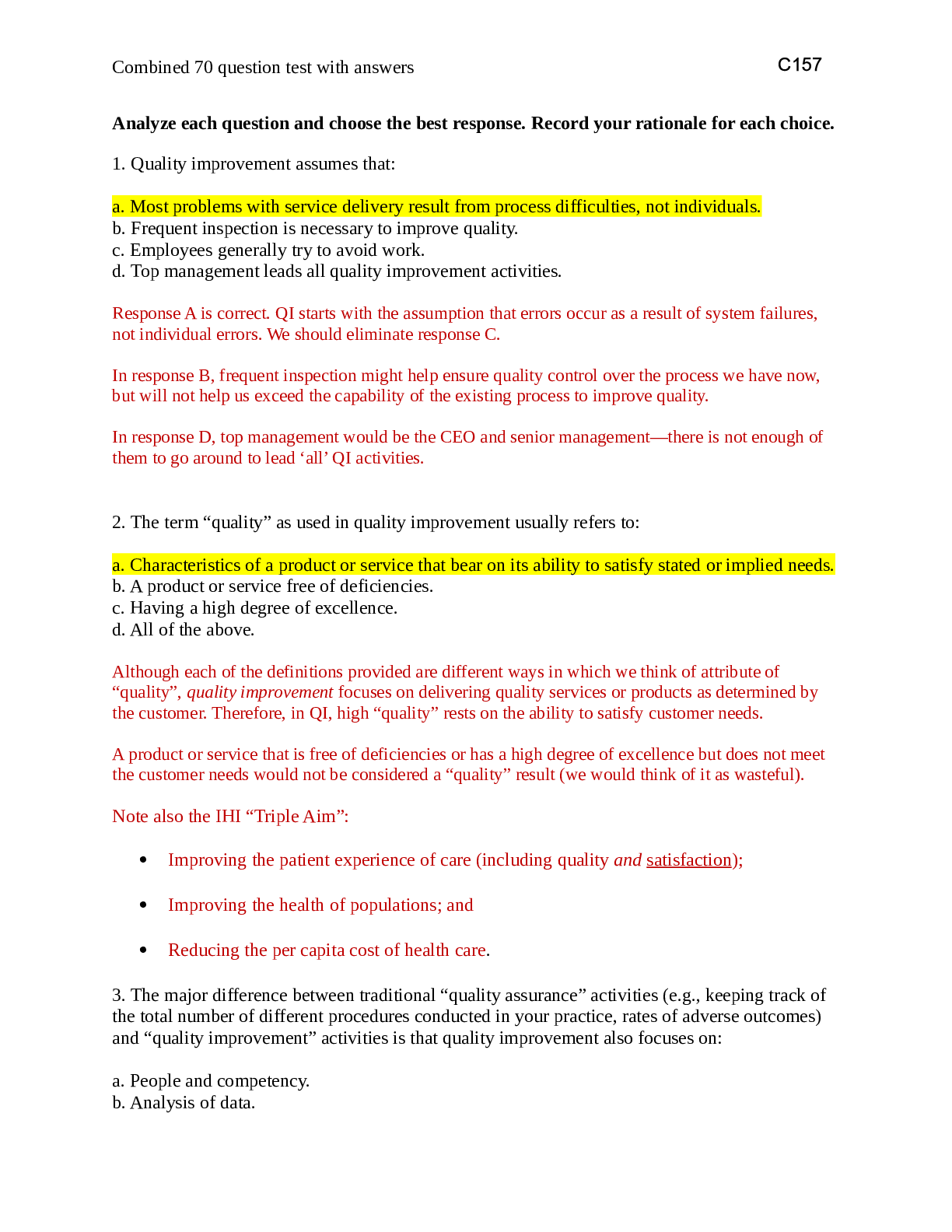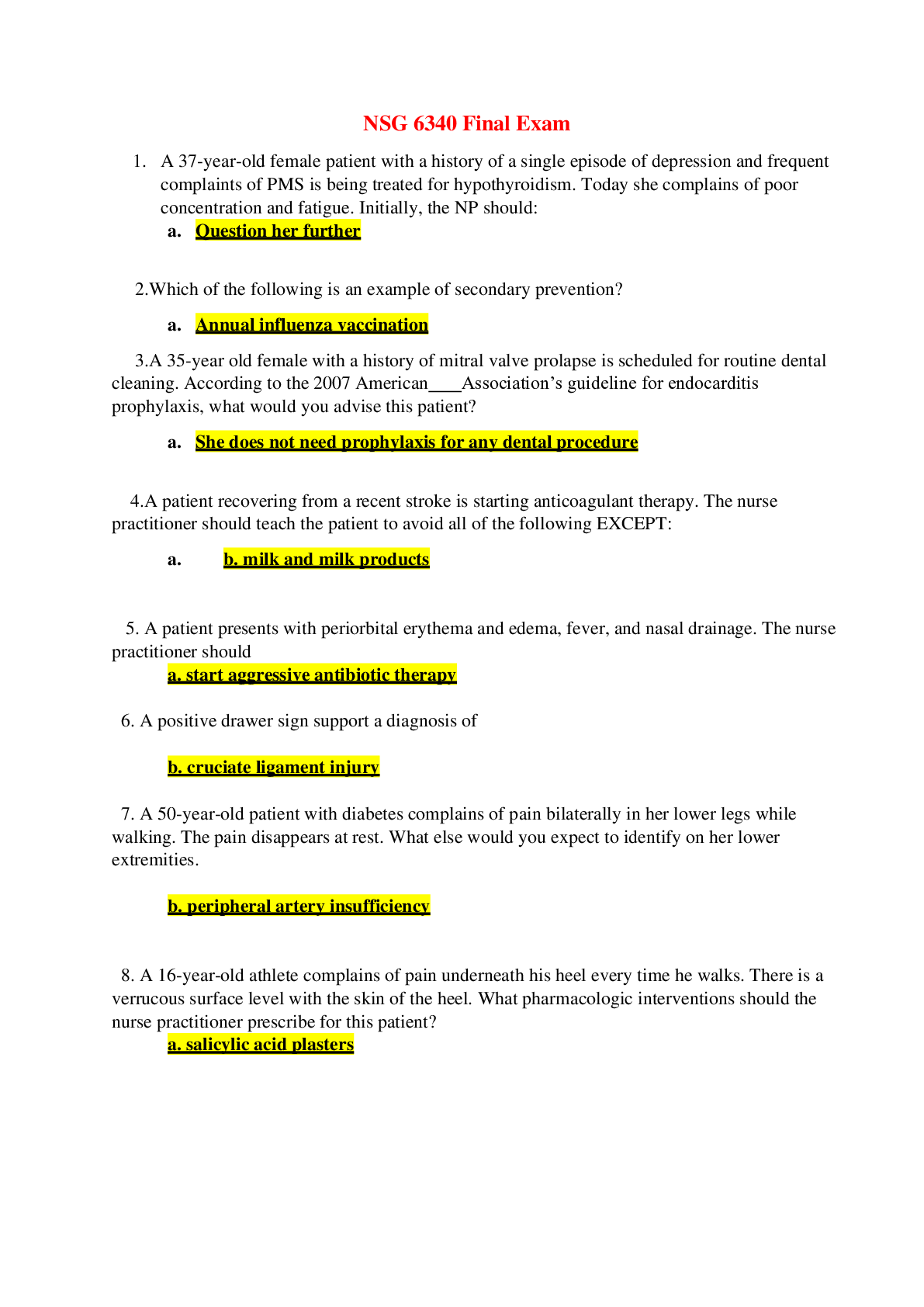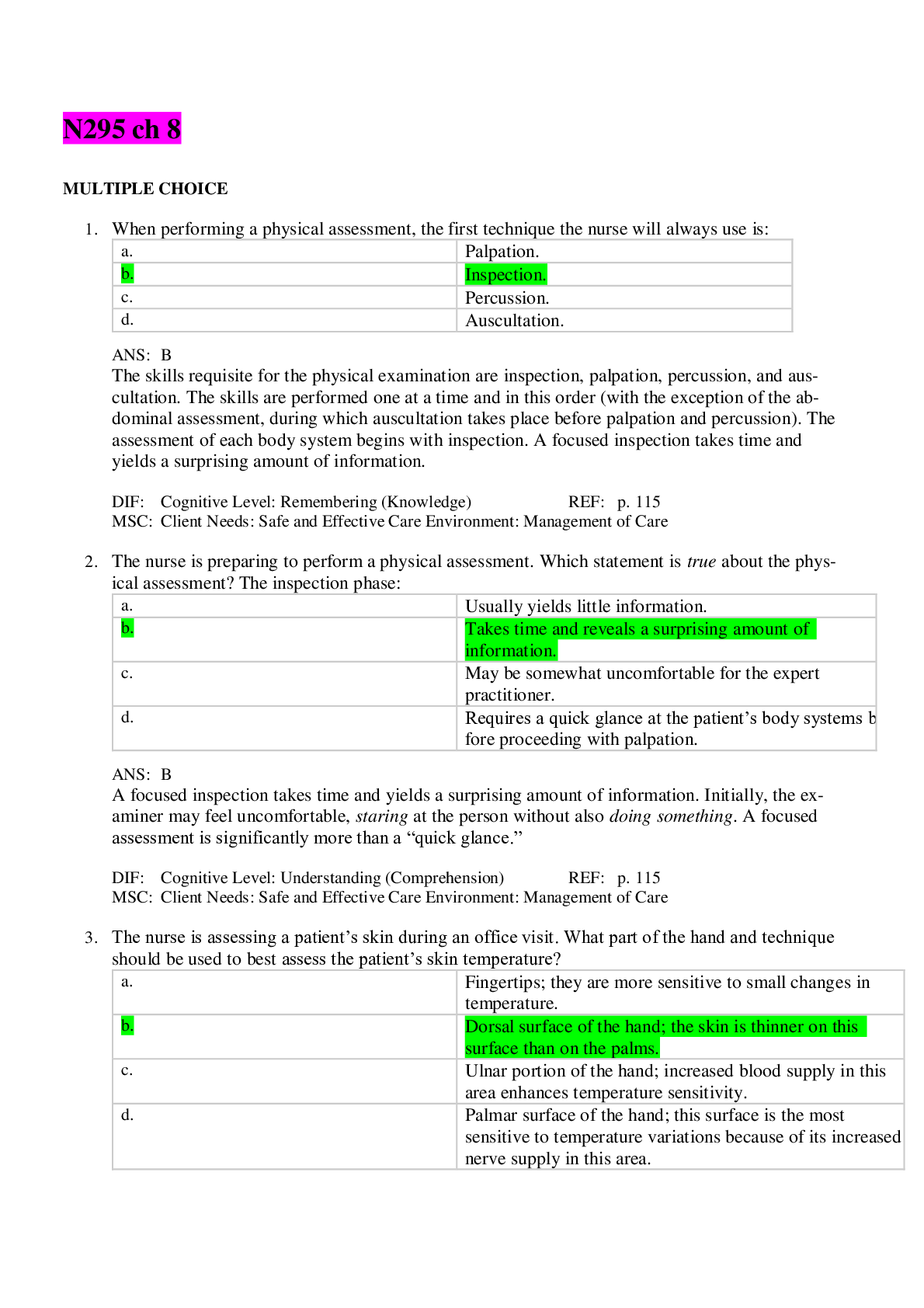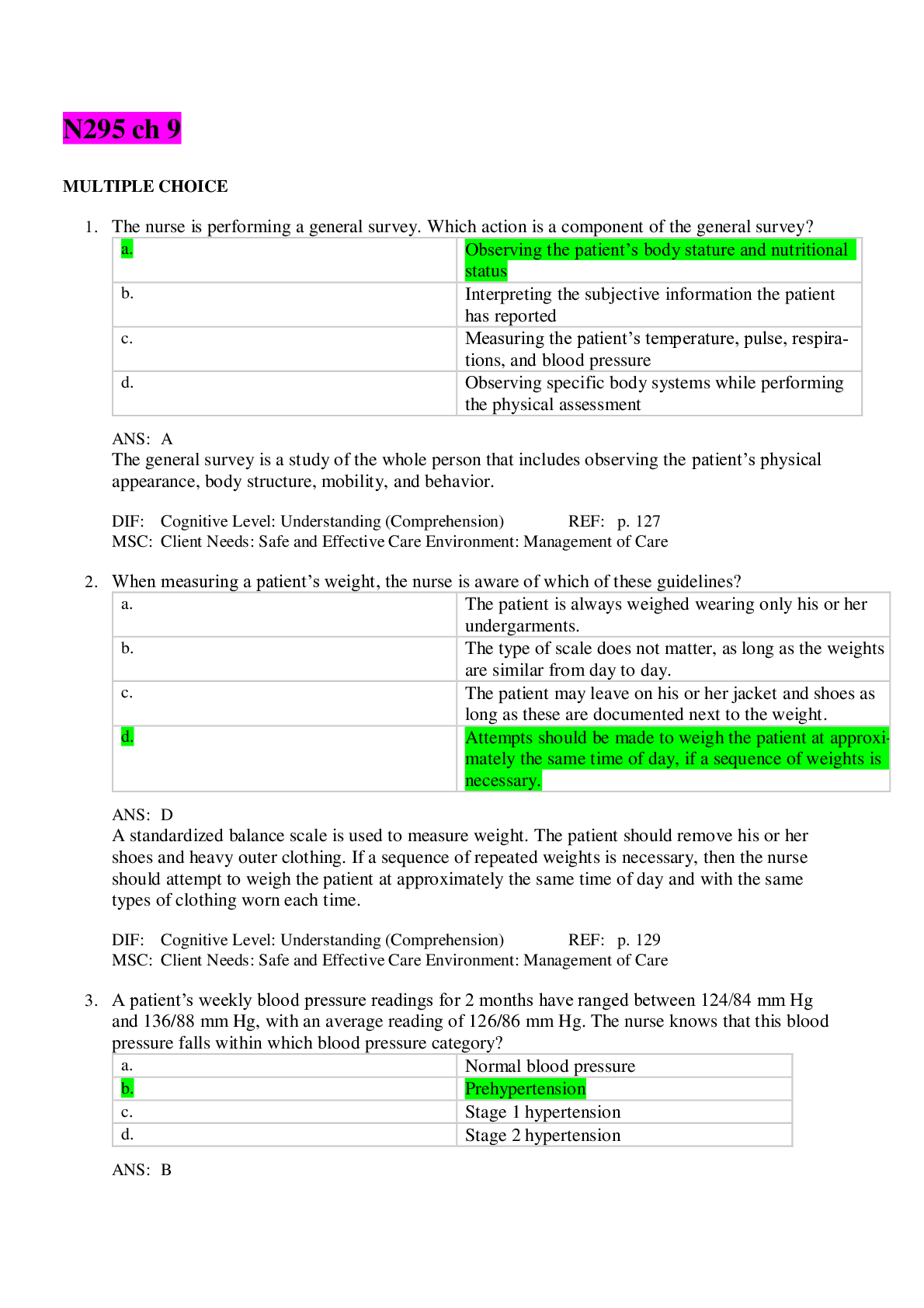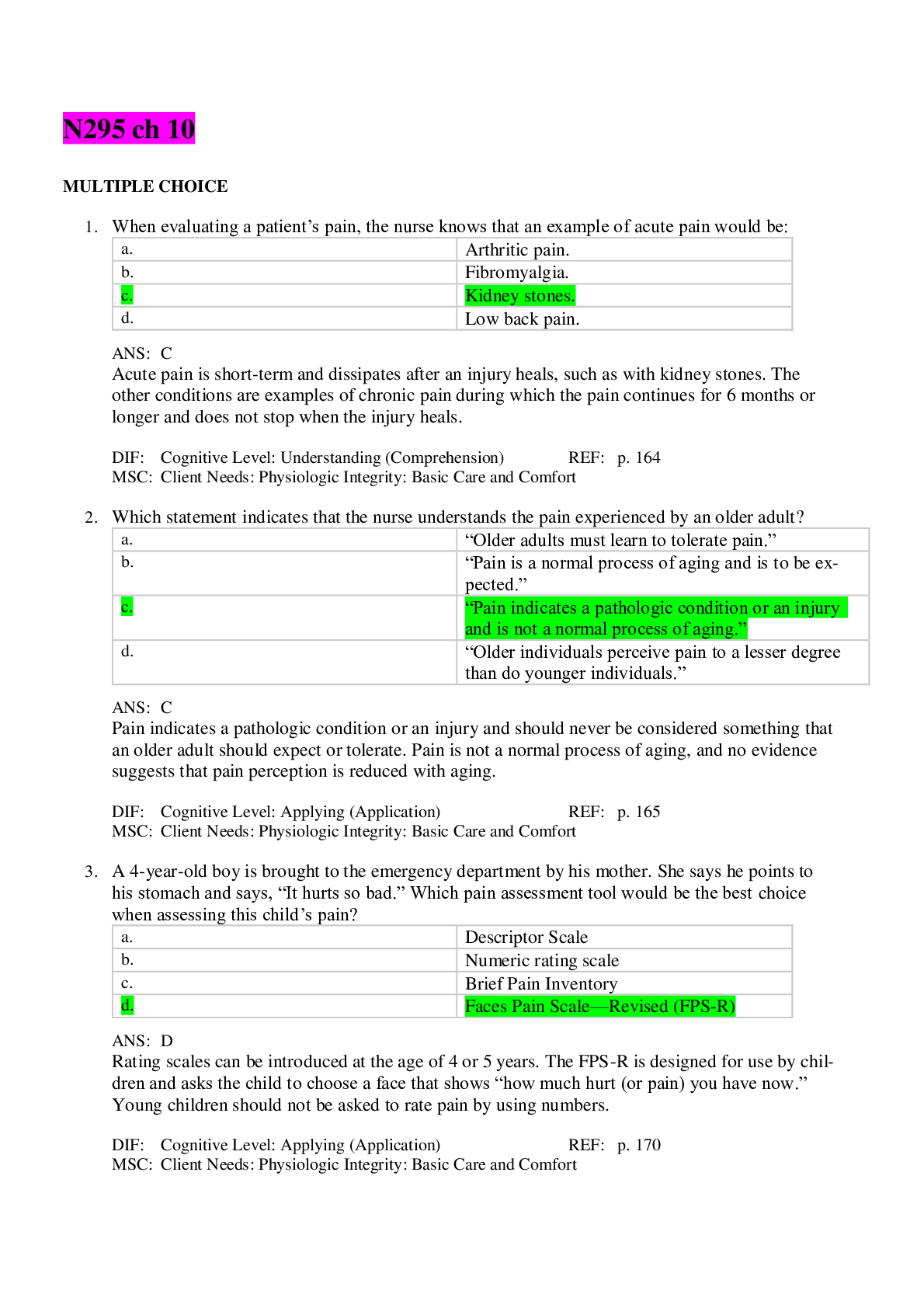Health Care > EXAM > CANCER AND ONCOLOGY NURSING NCLEX EXAM 2 50 CORRECT QUESTIONS AND ANSWERS WITH RATIONALES GUARANTEED (All)
CANCER AND ONCOLOGY NURSING NCLEX EXAM 2 50 CORRECT QUESTIONS AND ANSWERS WITH RATIONALES GUARANTEED PASS | RATED A+
Document Content and Description Below
CANCER AND ONCOLOGY NURSING NCLEX EXAM 2 50 CORRECT QUESTIONS AND ANSWERS WITH RATIONALES GUARANTEED PASS | RATED A+ 1. A 32-year-old woman meets with the nurse on her first office visit since unde... rgoing a left mastectomy. When asked how she is doing, the woman states her appetite is still not good, she is not getting much sleep because she doesn’t go to bed until her husband is asleep, and she is really anxious to get back to work. Which of the following nursing interventions should the nurse explore to support the client’s current needs? o A. Ask open-ended questions about sexuality issues related to her mastectomy o B. Suggest that the client learn relaxation techniques to help with her insomnia o C. Call the physician to discuss allowing the client to return to work earlier o D. Perform a nutritional assessment to assess for anorexia Correct Answer: A. Ask open-ended questions about sexuality issues related to her mastectomy Option A: The content of the client’s comments suggests that she is avoiding intimacy with her husband by waiting until he is asleep before going to bed. Addressing sexuality issues is appropriate for a client who has undergone a mastectomy. Option B: Suggesting that she learn relaxation techniques to help her with her insomnia is appropriate; however, the nurse must first address the psychosocial and sexual issues that are contributing to her sleeping difficulties. Option C: Rushing her return to work may debilitate her and add to her exhaustion. Option D: A nutritional assessment may be useful, but there is no indication that she has anorexia. 2. One of the most serious blood coagulation complications for individuals with cancer and for those undergoing cancer treatments is disseminated intravascular coagulation (DIC). The most common cause of this bleeding disorder is: A. Brain metastasis B. Sepsis C. Intravenous heparin therapy D. Underlying liver disease Correct Correct Answer: B. Sepsis Option B: Bacterial endotoxins released from gram-negative bacteria activate the Hageman factor or coagulation factor XII. This factor inhibits coagulation via the intrinsic pathway of homeostasis, as well as stimulating fibrinolysis. Option D: Liver disease can cause multiple bleeding abnormalities resulting in chronic, subclinical DIC; however, sepsis is the most common cause. 3. A pneumonectomy is a surgical procedure sometimes indicated for treatment of non-small-cell lung cancer. A pneumonectomy involves removal of: A. One lobe of a lung B. An entire lung field C. One or more segments of a lung lobe D. A small, wedge-shaped lung surface Correct [Show More]
Last updated: 7 months ago
Preview 5 out of 28 pages

Loading document previews ...
Buy this document to get the full access instantly
Instant Download Access after purchase
Buy NowInstant download
We Accept:

Reviews( 0 )
$15.50
Can't find what you want? Try our AI powered Search
Document information
Connected school, study & course
About the document
Uploaded On
Dec 08, 2024
Number of pages
28
Written in
Additional information
This document has been written for:
Uploaded
Dec 08, 2024
Downloads
0
Views
17


